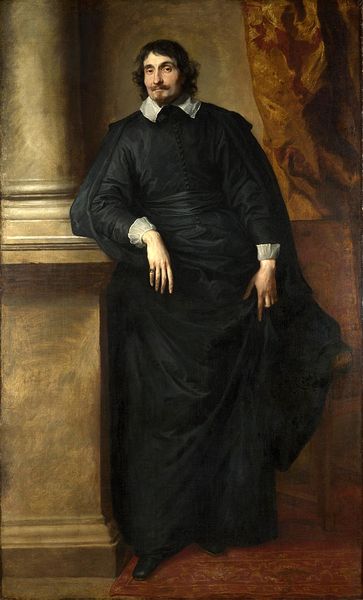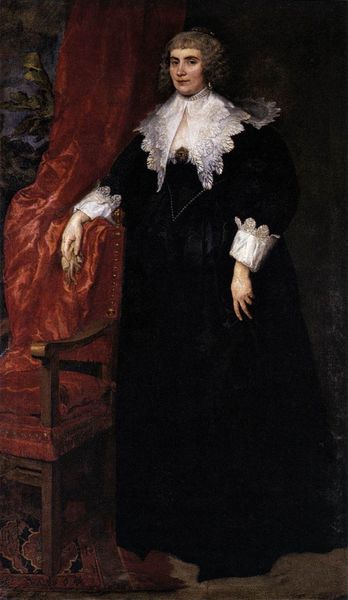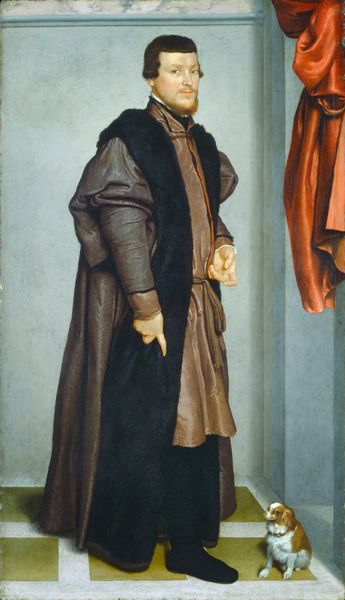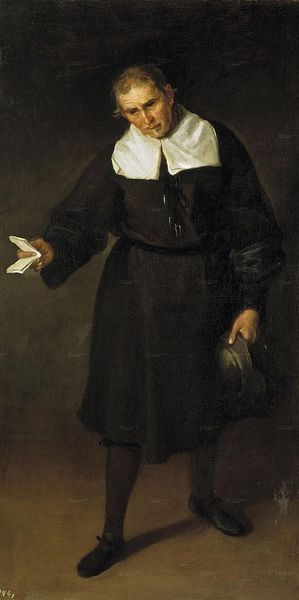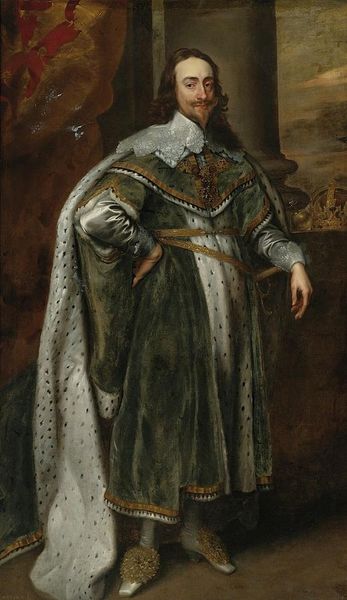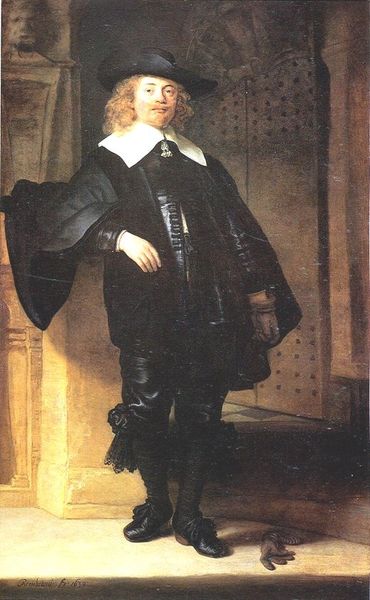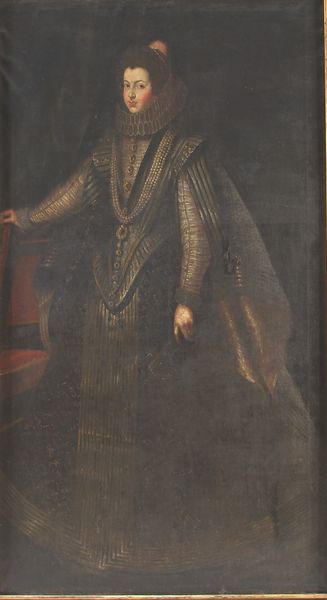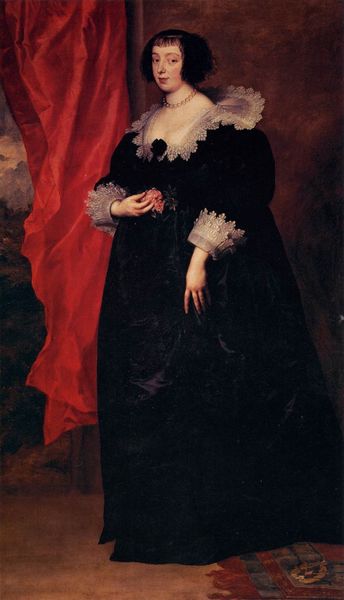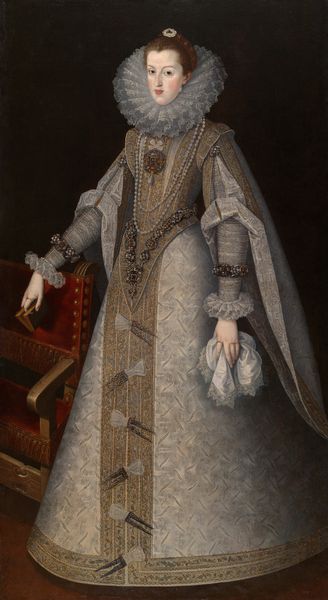
painting, oil-paint
#
portrait
#
baroque
#
painting
#
oil-paint
#
figuration
Dimensions: 120 x 205 cm
Copyright: Public domain
Anthony van Dyck painted this portrait of Joost de Hertoghe on canvas in the 17th century. Van Dyck was a Flemish artist who became the leading court painter in England. This portrait provides a fascinating glimpse into the social and economic structures of the time. The painting makes use of visual cues to convey status and power. Joost de Hertoghe’s expensive black cloak and the architectural details in the background speak to his wealth and social standing in the Netherlands at this time. We can also consider the institutional history that shapes this work. Van Dyck was part of a network of artists, patrons, and art markets that supported the production and circulation of such portraits. By studying portraits like this, and by consulting historical documents, letters, and economic records, we can gain insight into the lives of individuals like Joost de Hertoghe and the broader social and cultural context in which they lived. The meaning of art is contingent on social and institutional context.
Comments
No comments
Be the first to comment and join the conversation on the ultimate creative platform.

